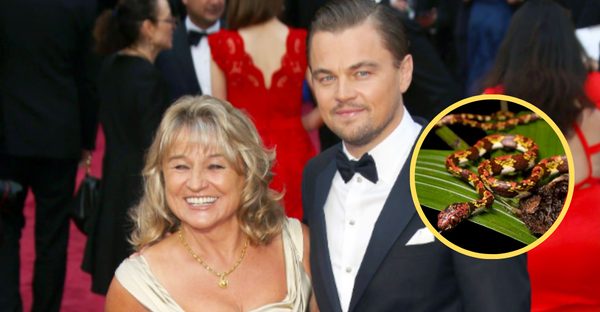When actor Leonardo DiCaprio attends an awards ceremony, his mother is often on his arm.

Now she’s somewhere else: in the annals of biological literature.
The actor recently named a newly discovered species of snail-eating snake after his mother, Irmelin, in a bid to raise awareness about the threats that mining presents to biodiversity in Central and South America.
Sibon irmelindicaprioae — DiCaprio’s Snail-eating Snake — is a docile reptile that dwells in eastern Panama and northwestern Colombia, where it forages for snails and slugs on palm fronds, trees and shrubs. But the old-growth forests that serve as its home are threatened.
Part of the reason has to do with the conversion of vital habitat to pastures, researchers say in a paper describing the species, along with four other newly identified types of snail-eating snake, in the journal ZooKeys. But mining poses another threat.
“Vast areas” of rainforest are being cleared to support large-scale mining, the researchers write, which in turn devastate the snakes’ habitat. Outside of protected areas of Panama, researchers write, just 54 percent of S. irmelindicaprioae’s habitat remains.
The study tracks the evolution of the snakes using DNA data from a variety of species within Dipsadini. Known as an animal “tribe” in taxonomic terms, the group includes a diverse set of snail-eating snakes with habitat throughout Central America.
The researchers used genetic tools to create a treelike chart tracking the relationships between the snakes. The analysis led them to identify the new species and give them proposed names.
Mining strips away habitat and fuel pollution that affects the slugs and snails that serve as the snakes’ main food source. Both legal and illegal mining, which ballooned during the pandemic, threaten the snakes, says biologist Alejandro Arteaga, the study’s co-author, in a news release.
In the rainforests of Ecuador’s Nangaritza River, he said, mining has turned an unspoiled landscape into a conservationist’s nightmare. The river “is a paradise no more,” Arteaga said. “Hundreds of illegal gold miners using backhoe loaders have now taken possession of the river margins, which are now destroyed and turned into rubble.”
Billionaire Brian Sheth, a former venture capitalist turned conservation philanthropist, named another one of the species, Sibon marleyae, after his daughter, Marley.








